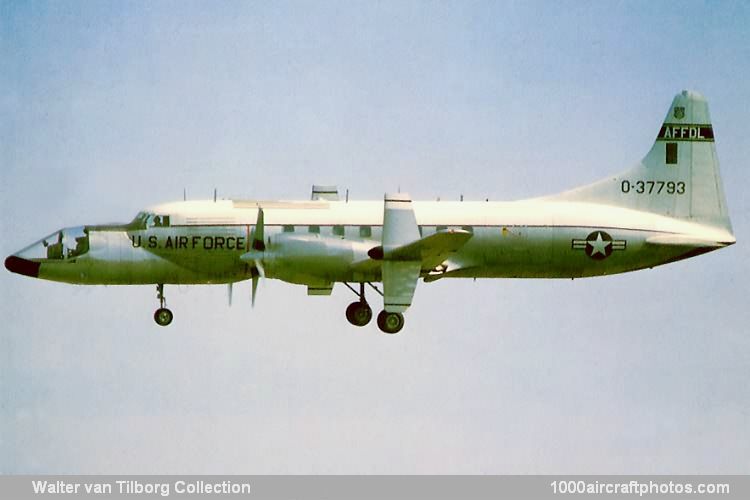04/30/2008. Remarks by Walter van Tilborg: "Produced as a model 340-70 C-131B the aircraft was delivered to the USAF in 1954. Deregulated to test duties the aircraft was designated NC-131B, that changed to model 580 NC-131H when it was re-engined with two 3,750 shp Allison 501-D-13D turboprops and was fitted with larger tail surfaces.
It was picked to become part of the TIFS (Total In-Flight Simulator) program developed by Cornell Aeronautical Laboratory in Buffalo, New York, USA for the Air Force Flight Dynamics Laboratory (AFFDL). Conversion by Aero Spacelines featured a lengthened nose with a separate cockpit that could be set up with the layout of any aircraft and computers made it handle as that particular aircraft. The fuselage was stiffening, and movable control surfaces were mounted vertically above and below the wings. Pictured in this configuration tt made its first flight on July 8, 1970.
Since it has been used to simulate many aircraft including the Space Shuttle, the nose configuration and canopy has been changed a few times while a number of development companies and organizations have made use of it, including Cornell (later Calspan, thereafter Veridian, presently General Dynamics), AFFDL (presently Air Force Research Laboratory) and NASA. For non-military operations the aircraft was registered N793VS.
07/31/2012. Remarks by Johan Visschedijk: "The TIFS (and last C-131 on the USAF inventory) was delivered to the National Museum of the USAF at Wright-Patterson AFB, Dayton, Ohio, on November 7, 2008, and presently resides in the Museum Annex, a controlled-access portion of Wright-Patterson AFB, where a number of presidential and research aircraft are stored. These aircraft are to be displayed in the planned fourth museum building that will hold the Presidential Aircraft Gallery, Space Gallery, and Global Reach Gallery."
